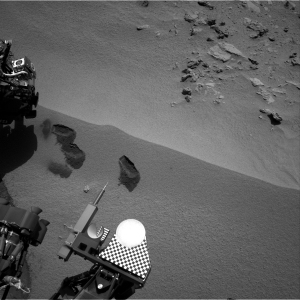Curiosity Rover Takes a Bite of the Red Planet
After taking two “sample” bites, the Mars Curiosity Rover has ingested a third bite to be studied by the Chemistry and Mineralogy (CheMin) instrument. CheMin, which uses X-ray diffraction, will allow scientists to make the most accurate analysis ever undertaken of minerals on Mars. Although the mission’s primary purpose is study whether or not the landing location ever offered conditions conducive to the development of microbial life, it may also help in the long-term effort to establish human life on Mars.
The pace and success of establishing a permanent human presence on Mars will depend on how quickly we learn to use local resources, putting together the literal building blocks of a new civilization. Back here on Earth, from the launchpad from which Curiosity departed, to our largest stadiums and skyscrapers, one of the basic building blocks of civilization is simple concrete, which has been in use continually since at least 6,500 BC.
Learning to manufacture “Marscrete” will be an equally critical step in extending that streak, and each bit of data gathered regarding the physical characteristics of local mineral deposits fills in a small piece of a very important puzzle.


